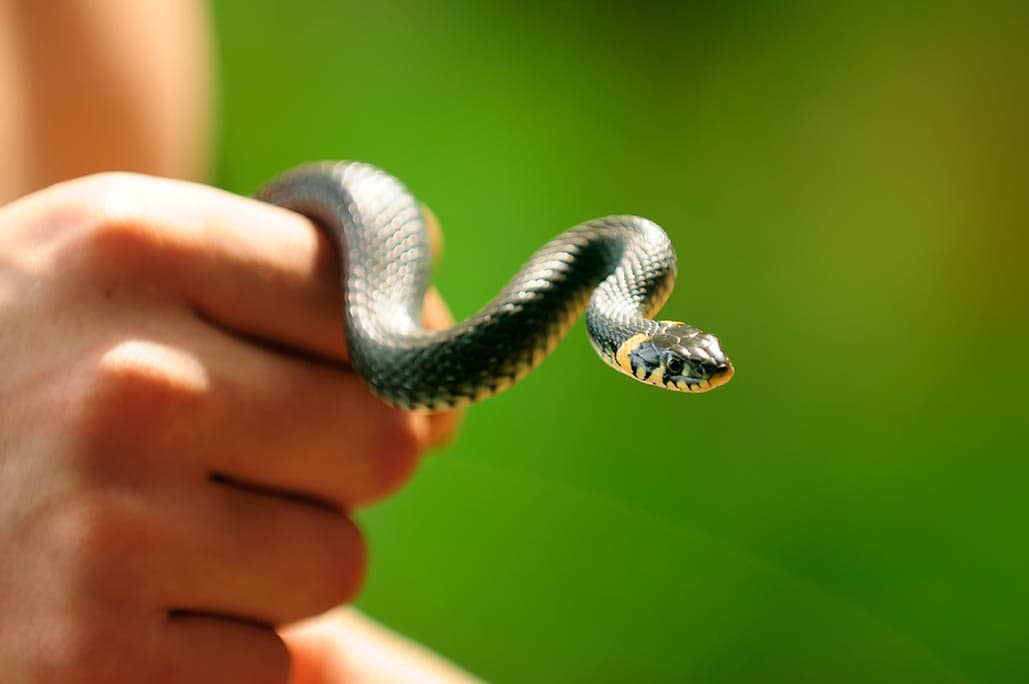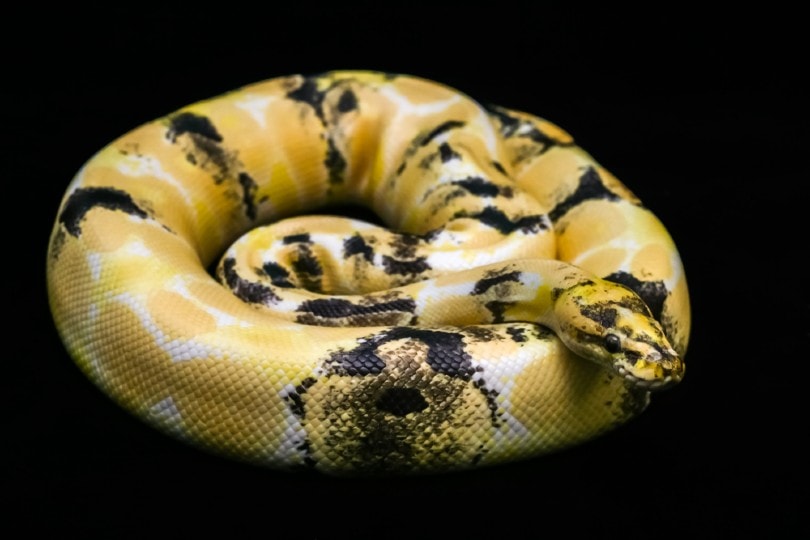
Owning a ball python is an adventure. They are not only unique and exciting animals to take care of, but they come with unusual challenges.
The most common health problems in ball pythons are almost all a result of the fact that they need very specific habitats that seem unnatural for us as humans. As such, the best thing you can do for your ball python’s health is to know exactly what their habitat is doing for them.
While creating a habitat that is safe and healthy for your ball python will most likely be expensive and time-consuming, this will help prevent many health problems and issues.
How Health Problems Start
Owning a reptile—an animal that needs the sun, the temperature, and the humidity to control their own body functions—is a lot of work. And it requires nearly obsessive attention to detail. As stated before, if their habitat requirements are not met, this will lead to health problems.
Before we discuss some of the more common health problems that ball pythons have, let’s review some of the things that tend to go wrong to cause them.
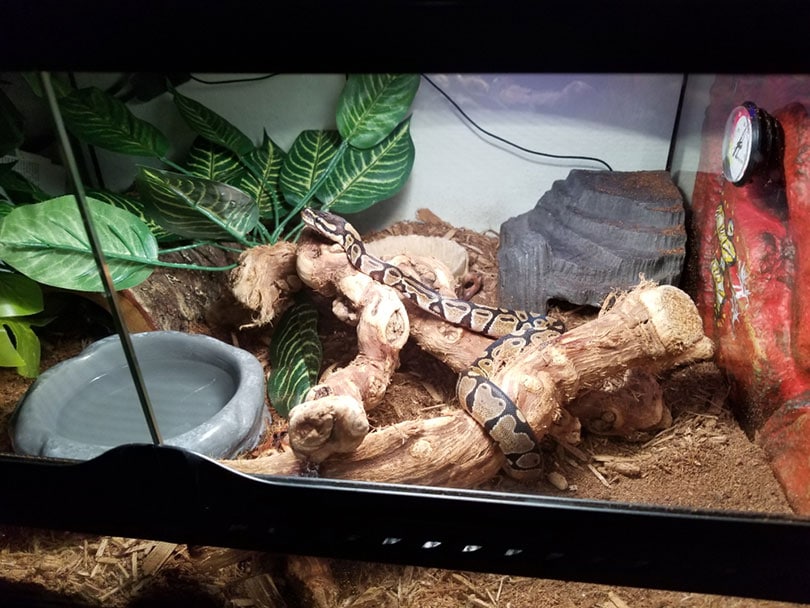
Temperature
Ball pythons need their enclosures to be warmer than our homes. But, just as important is the need to have a temperature gradient between 80–85°F (27–29°C). And an ultraviolet light is an absolute must!
They need to be able to go somewhere to warm up when they need extra warmth and somewhere to go to cool off. Having thermometers in both the cool and warm ends of their enclosures can help you closely monitor their temperature gradient.
Humidity
Ball pythons need it to be very humid, with about 50–70% humidity. And they need a humidity gradient. They need to be able to submerge themselves in water but also go and dry out a little. Be very careful their baths aren’t too deep, and make sure they cannot get stuck in it (the walls are too high for them to climb out of). They can easily get stuck and drown.
A humidity box where the humidity is even higher between 80–100%, which also has a temperature gradient, is a must. This humidity box provides them with extra warmth and humidity for them to recharge in. It helps their skin stay healthy and hydrated.
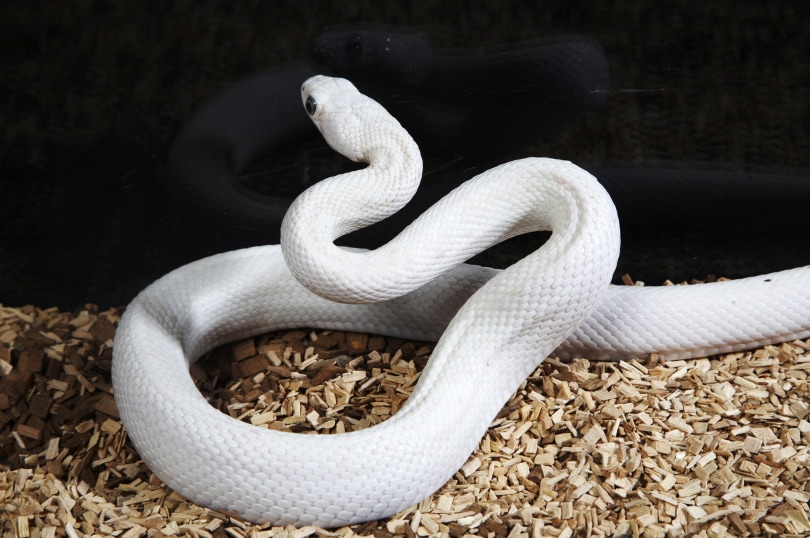
Diet
As carnivores, ball pythons in captivity unusually eat dead mice and rats, whole, at a frequency of 1 to 4 weeks. The rodents may be frozen to begin, but they need to be at room temperature when fed. Do not feed cooked or hot rodents.
The 7 Health Problems in Ball Pythons
1. Dysecdysis
Problems shedding are very common in ball pythons. Ball pythons shed their entire skin in one go, but the skin can get stuck or not peel off smoothly. When this happens, it leaves a spot of vulnerability on their skin which can get infected if not resolved.
Dysecdysis is the term for problems shedding their skin. Skin can get stuck around their eyelids and cause eye infections or along their back where it doesn’t get rubbed off.
On the other hand, if the skin shed is pulled off before it is ready or pulled off too roughly, it can cause damage to the fragile skin underneath.
Dysecdysis often happens because the ball python’s habitat is not warm and/or humid enough. Review the requirements discussed above and bring your ball python to a vet for an individual health and habitat assessment if you notice dysecdysis.
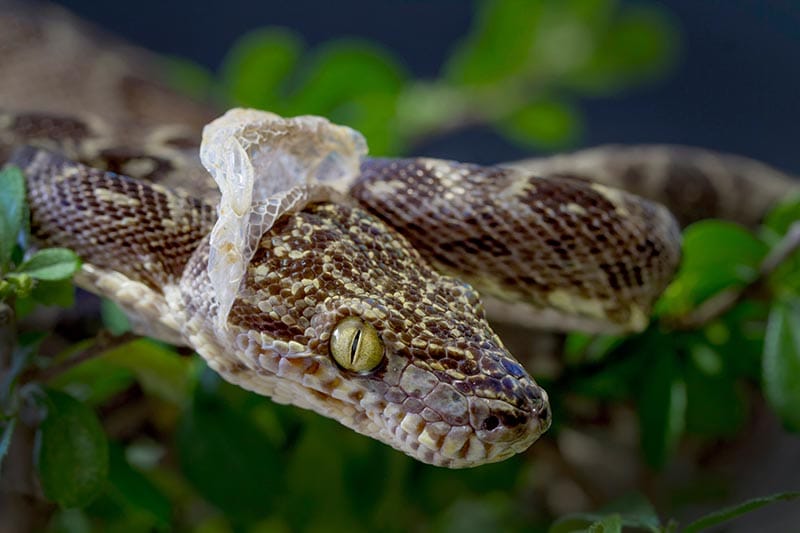
2. Live Prey Bites Wounds & Infections
If ball pythons are fed live prey, the rodents can fight back and bite the snakes. The injuries can range from small scratches to deep puncture wounds to gashes. A rodent can even kill a snake, especially if they are too big.
And wounds are always open to infection. If your snake is wounded, be sure to check the wound every day and watch for discharge or redness. Snakes’ skin infections do not swell up like dogs and cats (or humans). So, watch it carefully and bring them to the vet for follow-up assessments as it heals.
3. Dermatitis
It is very common for ball pythons to develop sores on their skin as a result of their habitat. They can get burns from their heat lamps. They can scratch themselves on rough surfaces. They can develop blisters from slithering over the same textures repeatedly. And, if their enclosure is not clean enough, bacteria and yeast can build up in the enclosure and on their skin.
Watch for patches of red skin, bumps, or spots that suddenly appear anywhere along your snake’s body. When the skin is irritated, it is called dermatitis. Watch for these signs.
Make sure your snake’s enclosure is clean and safe for them to slither on. Offering a variety of textures for them to rest on helps keep their skin healthy because they do not develop repeated wear patterns as they slither along.
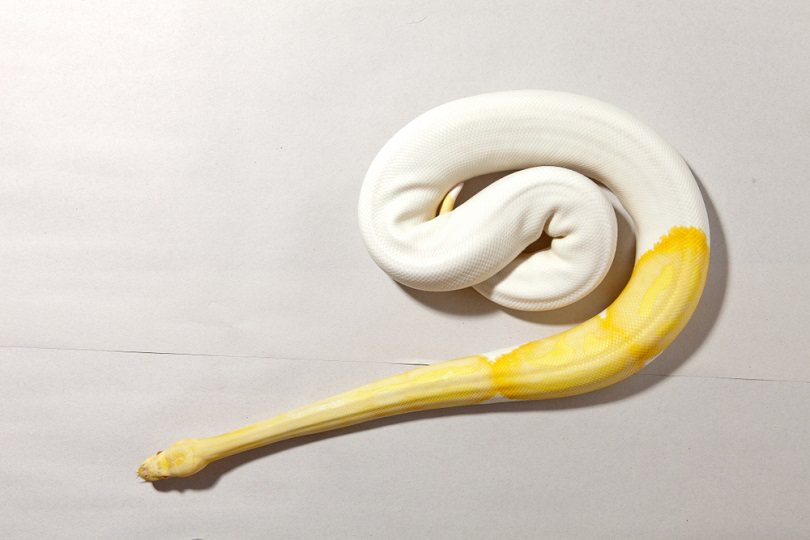
4. Respiratory Infection
Respiratory disease is very common in ball pythons. They are prone to infections of the lungs and upper respiratory tract, which can cause them to struggle to breathe or have discharge from their nose.
Most of the time, you should not really be able to see your snake breathing—only if you look very carefully. If you suddenly notice them breathing, that is a red flag.
Discharge from the nose might also not be super obvious, but you might notice them blow bubbles from their nose. Or they may just have what appears to be a dirty nose. Both are red flags.
If you notice any of these problems, bring them to a vet right away for treatment.
5. Dental Disease
Dental disease, also known as stomatitis, in snakes is a little different than what we are used to, so it is not really called dental disease but stomatitis instead. Stomatitis is when a sore forms on the gums or lips. It can then get infected and become a bigger sore, and even infect the teeth.
Either way, it is painful and can keep your snake from eating.
Stomatitis needs to be treated by a veterinarian. Try to keep an eye on the inside of your snake’s mouth. If you notice a red spot, or sometimes it looks like a white/gray-grainy, cheese-like pocket, bring them for an exam.
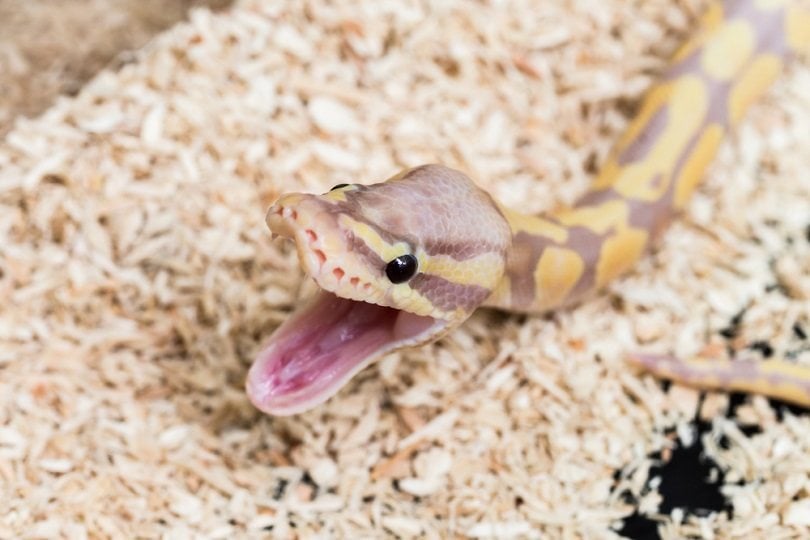
6. GI Parasites
Because ball pythons are fed raw prey, they tend to get gastrointestinal parasites, usually called worms. However, there are several other GI parasites that are not worms that can also be problematic.
Parasites can cause stomach upset, vomiting, and diarrhea. And they can cause your python to starve, even if they are eating.
Not all parasites are a health problem in snakes, but if too many are present, they can be very problematic. And because they live in our homes, it is generally better not to have a bunch of parasites floating around.
Regular fecal exams are helpful for monitoring parasite burdens. Get them done every 6–12 months.
7. Metabolic Bone Disease
As reptiles—snakes—need ultraviolet light to acquire the right vitamins and minerals. Without UV light, they can not only get very sick quickly, but over time, with a chronic lack of UV light, their bones can start to disintegrate. This is called metabolic bone disease.
Weak, unhealthy bones can be debilitating for a snake. And what often happens is a UV light is set up and then forgotten about. Or it is not monitored and checked, or it is too far away. Perhaps the snake doesn’t get exposed to it for enough hours during the day. As a result, they get some UV light but not enough, and over years and years, this can cause serious damage to their skeleton.
Change your UV lights every six months. And research the proper use for the specific type of UV light you get; each brand may have different recommendations.
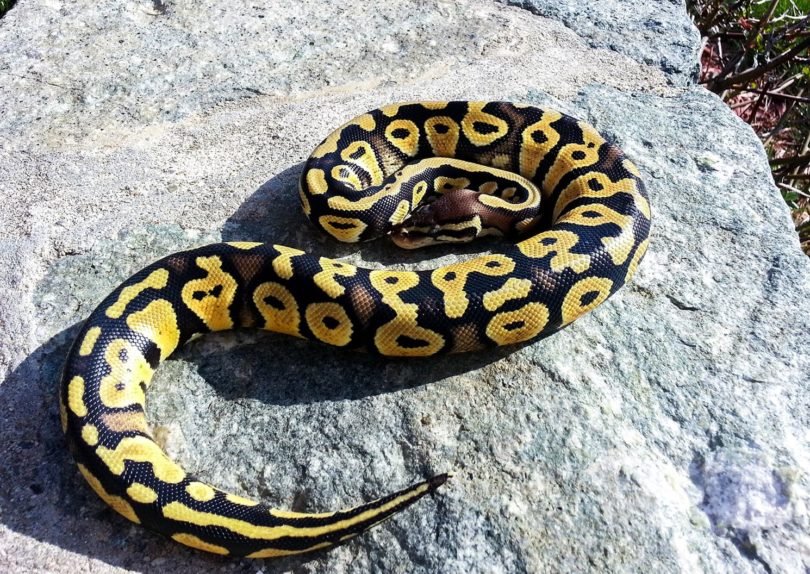
How Do I Know if My Snake Is Sick?
Good question, Snakes are so different from humans and dogs and cats that many snakes are sick and show signs of their sickness, but their humans do not notice.
Keep a close eye on your snake and get to know what is normal for them. Get to know what their body looks and feels like. Knowing what is normal helps you spot red flags when they start to feel unwell. And then take them to a vet. Signs of an unwell snake include the following:
Conclusion
Do your research when setting up your ball python enclosure. Find reputable sources and record your results. Numbers matter here. Record daily temperatures, humidity levels, and feeding schedules.
To have a healthy snake, you have to become an expert in ball pythons. What may work for one species of snake is not what ball pythons need. Unlike dogs and cats, you have to have a professional level of knowledge about your ball python for them to live their healthiest life.
Featured Image Credit: Krisda Ponchaipulltawee, Shutterstock



